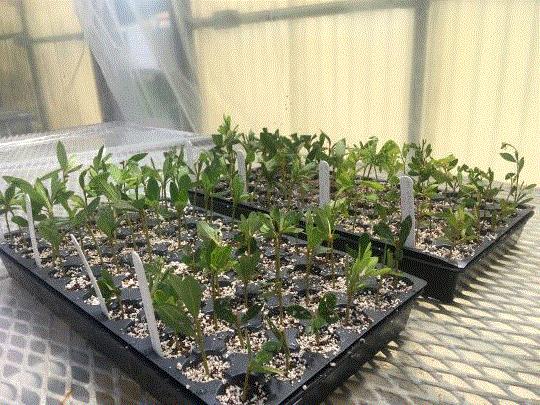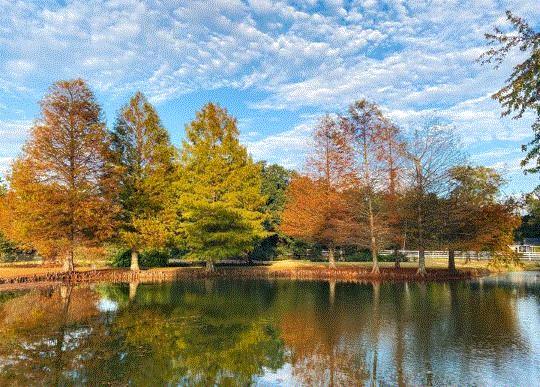New USDA Hardiness Zone Map Released
The USDA has released an updated Plant Hardiness Zone Map for the first time since 2012. This map is based on 30-year averages of lowest annual winter temperatures in specific locations with data collected from 13,412 weather stations vs. 7,983 that were used for the 2012 map. For anyone in Alaska, you will notice a major increase in resolution as the new map has a 0.25 square mile resolution compared to the previous 6.25 square miles.
As anyone reading this in the U.S. should likely already know, we talk about hardiness zone quite often. The hardiness map indicates the average lowest temperature for an area, as opposed to the Heat Zone Map, which is put out by the American Horticultural Society and represents the average number of days above 86 F, annually (the zone numbers are very similar; I have had many students mistake the two).
There are 13 hardiness zones represented in the U.S., each with a half zone (i.e., A or B). A hardiness zone represents 10 F, while a half zone represents 5 F. Many of you will likely not notice a difference in the new map, as about half of the U.S. remained in the same hardiness zone. The other half saw an adjustment, which was on average to the warmer half zone (i.e., my hometown of Hammond, Louisiana, shifted from 8B to an 9A).
Check out the map
HERE to see where you land. There are also a bunch of new tools, tips and videos accompanying the new map.

MANTS Seeks New Products
The Mid-Atlantic Nursery Trade Show (MANTS) is inviting registered exhibitors to submit their latest products, varieties, services and innovations for the 2024 Trade Show and New Product Media Showcase. Not only is this a great way to draw
added attention from green industry media (like myself), entry is free to all exhibitors attending the 2024 trade show.
“Submitting new products is a quick and straightforward way to get more eyes on your latest products and services, extending your reach beyond the booth,” said Vanessa A. Finney, Executive Vice President of MANTS.
There is still time to get everything set. Exhibitors interested in participating should submit their entries via the New Products online form no later than December 11 to be considered. Show organizers will review submissions and notify those selected. This year, MANTS is scheduled for January 10-12 in the Baltimore Convention Center. The New Product Showcase event is scheduled for January 11.
The New Products online form can be accessed
HERE. For more information on MANTS 2024, visit the
MANTS website.

Supplemental H-2B Visas Offered
Labor is one of the biggest challenges facing the horticultural industry, regardless of business type. Growers can often lean on the temporary foreign worker program, known as guest workers.
First, the news, then the background behind these worker programs. The Department of Homeland Security and Department of Labor have announced an additional 64,716 H-2B visas for the 2024 fiscal year, which is beyond the annual 66,000 H-2B visa cap. Now, the background and why this matters.
Agricultural entities can access H-2A guest labor, which is “uncapped” or has no restriction on total number of guest workers that can be recruited. There are specific guidelines that growers must follow to recruit H-2A labor, which I am not going to go into today.
On the other hand, H-2B visas are for non-agricultural workers. Anyone in the landscape business should know that as for as the governing bodies that handle these guest worker visas are concerned, landscaping is considered non-agricultural. Therefore, landscape contractors typically rely on H-2B workers. (Side note—the way I remember the difference is H-2Agriculture, and H-2Business. Now, this is not what it stands for, but it serves as a nice moniker that helps me remember.)
Anyways, H-2B guest workers are capped each year. These caps vary by year, but are typically considered low. In 2023 the total base H-2B visas was 66,000—across the entire country! Needless to say, these visas run out quickly as there are many other industries that utilize H-2B labor, including restaurants, construction and hospitality, just to name a few. That is approximately only 20 visas per county in the US.
The addition of another nearly 65,000 H-2B visas is exciting, and will be a very needed boost for members of the landscape industry looking for more labor in this upcoming year. Of the supplemental visas, 20,000 are for new employees, while the remaining 44,716 will be available to workers who were previously granted H-2B visas in the past three years. For those interested in the full news brief, check out the news release on the USCIS website.

Propagation Mistakes
At the IPPS (International Plant Propagators Society) meeting last week, my team was focused on strengthening our propagation techniques. I brought my research associate, Maureen, with me to learn—or more likely Maureen brought me as she was presenting our propagation experiments. I just came along for the fun.
We had some difficulties with our woody propagation, particularly surrounding moisture balance in the 2023 heat dome. Maureen and I explored various concepts of improving air space in small propagation cells, stratification (i.e., layering), wood fiber and Growcoon inserts (great resource). All these techniques improved our air-filled porosity in the small cells, and we look forward to our improved propagation success.

Venturing further down this rabbit hole, I read a recent article on
GrowerTalks online by Lynn Griffith, a tropical plant and soil expert in Boca Raton, Florida, discussing common mistakes for propagation, and thought it would be fun to share. Lynn gives us a checklist of common propagation mistakes, and while reading through it, I realized I was guilty of too many! Over misting
—check, irregular mist head height
—check, wrong time of year
—check ... you get the picture. Anyway, as my team is on a quest for better propagation success, I found this article fun, informative and actionable. I highly recommend this to anyone looking for some quick and easy tips to improve propagation. Check out the article
HERE.

Cultivating a Championship Roster
With Thanksgiving next week, I thought it would be fun to call across the hall and recruit my colleague Damon Abdi to help me write a fun holiday-themed post (and a few fun photos from our gardens by Ashley Edwards):
Thanksgiving is a time to reflect on the year. As we curate our combination of dishes for family and friends, we prepare a feast to celebrate the season’s crop. While the feelings of camaraderie may appear abundant at this time, dinner tables throughout our country find themselves embroiled in passionate, at times contentious debates. Tempers flare, friends become enemies, and houses become divided as we shout over each other in response to what we see on the television. No, this isn’t political commentary ... this is college football rivalry week. Many of us have mid to late November circled for this exact reason, but as we ruminate over our respective team’s rosters, now is the perfect time to also set our landscape lineup for next season.

A landscape, and an offense, benefits from a solid wall of protection. Hedges serve as the offensive line for the landscape, offering protection from pass-rushing pets and nosy neighbors. The hedge could protect the foundational piece of the landscape—the quarterback. A good foundational landscape tree or highlight should perform all season long, from the sweltering late-summer heat of opening week, all the way through the final, dreary days of bowl season. No offense or landscape is complete without skill positions or plants that add further interest and excitement. Consider an upright, spreading tree (a wide receiver of attention), or a tall, densely formed evergreen around the corner of the house (to soften the tight ends in the architecture). A diminutive perennial coming out of the backfield can keep people running back for more. Attention must be paid to the defense as well, making sure that open gaps in the field are covered. Groundcovers, like defensive backs, may be prized for their speed (of growth) and capacity to cover large areas rapidly.

They say championships are won in November. So, here’s the kicker ... a well-organized fall planting will set you up for a future championship run. Consider using a wide variety of plant materials in your landscape, including some “blue-chips” but also some emerging contenders. After all, who really wants to see the same five to six plants every year in the championship?
I will close with warm wishes for great food, family and friends to all. Happy Thanksgiving!







Think big,

Jeb Fields
Editor-at-Large
Nursery & Landscape Insider
This has been received by 32,182 of the hardest-working horticulturists in show business!
If you're interested in reaching 32,182 clients who eagerly await every Nursery & Landscape Insider and surely read every word, contact Kim Brown ASAP and she'll hook you up.